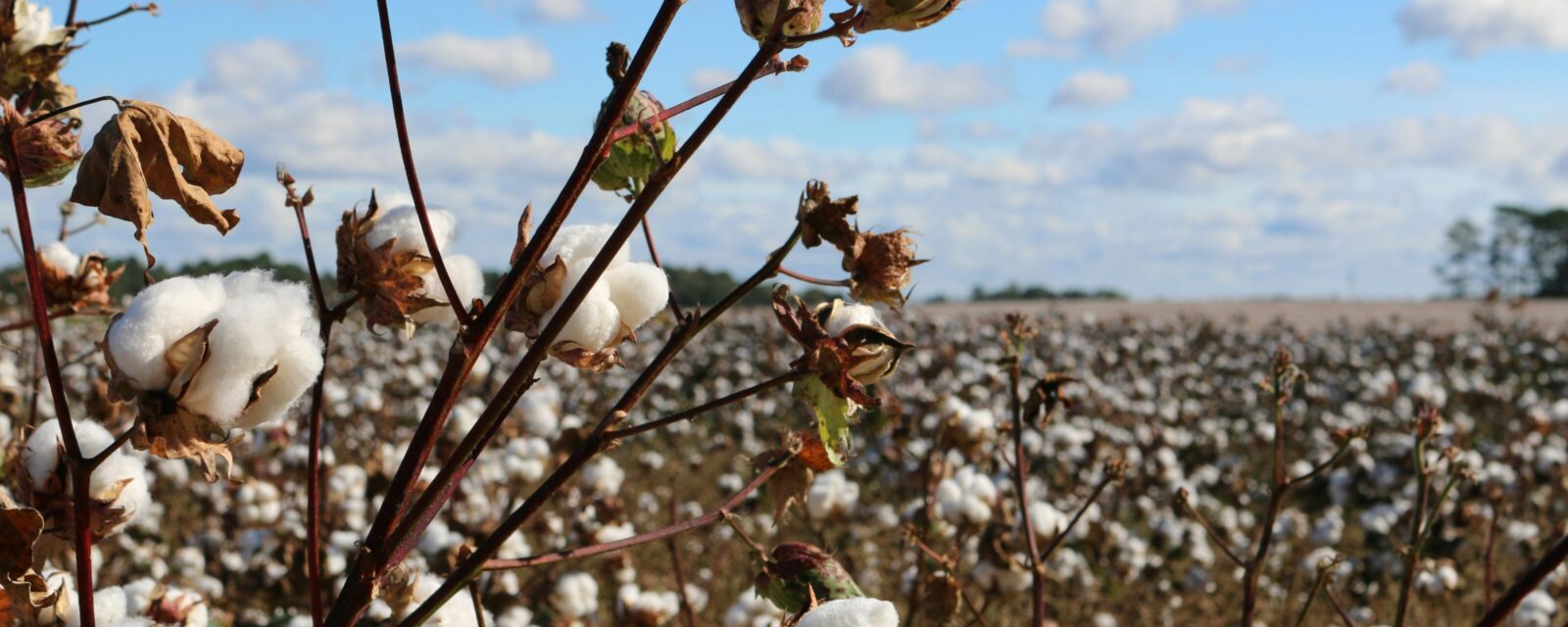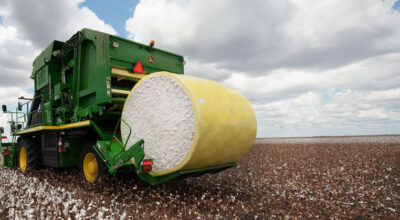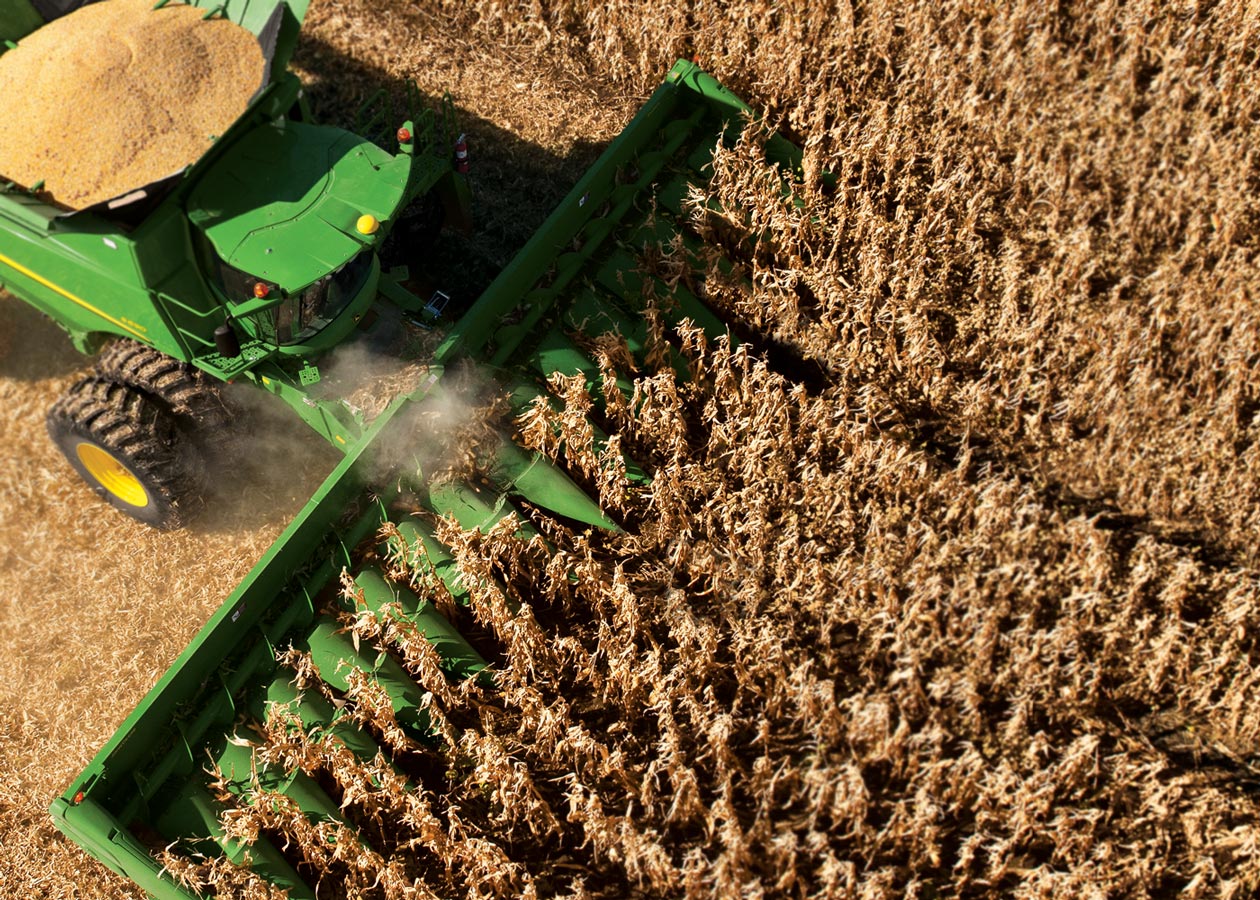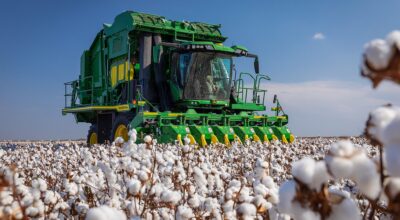Cotton harvesting season marks the critical finish line after months of hard work in the field. But if the timing isn’t right, even the fluffiest fields can lose their value fast.
Harvesting too early cuts fiber before it’s fully developed, while waiting too long leaves cotton vulnerable to late-season storms and quality loss. With such a precise timeframe, careful preparation and the right equipment are essential for a successful harvest.
In this blog, we’ll walk through when cotton is harvested in different regions, how the process works, and how John Deere equipment and precision ag technology help you bring in a high-quality harvest efficiently.
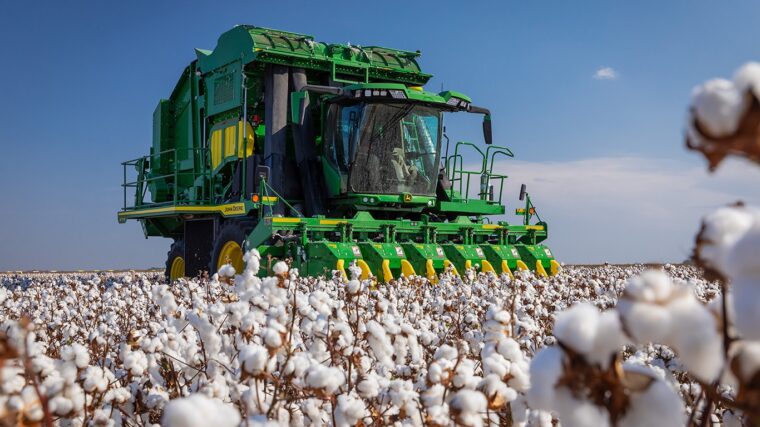
Key Takeaways
- Cotton harvest season in the U.S. typically runs from September through November, with exact timing varying by region and climate.
- Dry weather conditions protect fiber quality, while poorly timed rain or storms can reduce yields and damage cotton.
- Farmers choose between two main harvesting methods: cotton pickers, which protect fiber quality, and cotton strippers, which prioritize speed in dryland regions.
- John Deere’s CP690 and CS690 harvesters bring efficiency, speed, precision technology, and lower operating costs to the harvest process.
When Is Cotton Harvest Season?
In the U.S., cotton harvest generally stretches from late September through November, but the exact timing depends largely on geography. Each region has its own rhythm shaped by climate and growing conditions.
- South Texas: Harvest can begin as early as July, thanks to the region’s hot climate and early planting schedules. Fast-growing conditions lead to one of the earliest harvests in the country.
- Southeast (Georgia, the Carolinas): Warm, humid weather speeds up crop maturation, with harvest beginning as early as mid-September.
- Mid-South and Delta (Mississippi, Arkansas, Louisiana): October is peak season here, with farmers watching the skies for heavy rain and wind.
- Texas High Plains: Harvest typically runs through November due to later planting and a cooler, drier climate that delays crop maturity.
- Southwest (California, Arizona): Harvest begins in October and may continue into November, supported by long, hot growing seasons and widespread use of irrigation.
Across all regions, weather is always a wildcard. One poorly timed rainstorm during defoliation or harvest can stain cotton, lower its grade, or even knock lint to the ground — costing farmers both quality and profits.
How Is Cotton Harvested?
The right method for harvesting cotton depends on your region, cotton variety, and conditions of the field. Farmers typically rely on two machines — pickers and strippers — each designed to harvest cotton in its own way.
Cotton Pickers
Cotton pickers pluck seed cotton directly from the open bolls, leaving the rest of the plant mostly intact. This gentle approach only removes lint and seed, helping preserve fiber cleanliness and strength, which is ideal for farmers producing premium-quality cotton.
Many modern pickers also integrate onboard module builders, which wrap cotton into round modules right in the field to save time and labor.
To further enhance efficiency and quality, these machines feature advanced technology like AutoTrac™ for precise row guidance and moisture sensors that help harvest cotton at optimal conditions.
Cotton Strippers
In drier regions where speed is key, cotton strippers are the go-to choice. Rather than selectively plucking lint, strippers sweep the entire boll straight from the stalk, including fiber, seed, and even some leaves.
Since this method collects more material, the cotton requires thorough cleaning after harvest to remove debris.
The CS690 Cotton Stripper also features Harvest Identification and RFID tracking technology, enabling module-level traceability from field to gin.
Equipment for Cotton Harvesting Season
Whether you choose to work with a cotton picker or stripper, John Deere machines are designed to turn harvest from hard work into a streamlined, one-pass operation.
John Deere CP690 Cotton Picker
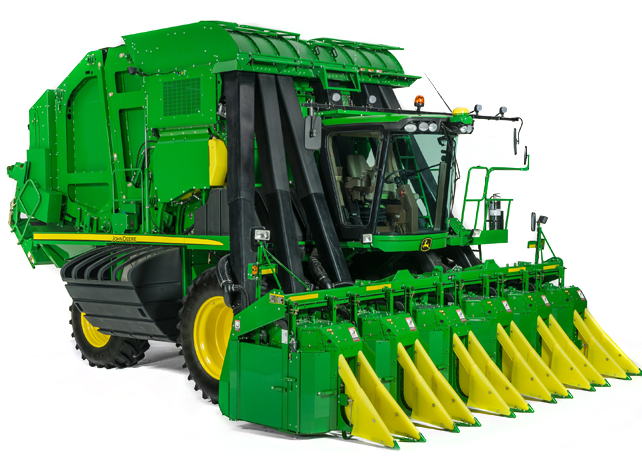
- Engine Power: A 13.5L, 590 peak HP engine provides the strength needed to power through tough field conditions.
- Fuel Efficiency: With a 370-gallon fuel tank and 16-gallon diesel exhaust fluid (DEF) tank, the CP690 runs a full day on a single fill, minimizing downtime for refueling.
- Continuous Harvesting: An onboard round module builder enables nonstop cotton harvesting, eliminating time lost to unloading or crew changes.
- Traction and Reliability: Standard four-wheel drive with anti-slip regulation helps operators keep moving, even in wet field conditions where other pickers may struggle.
- Reduced Costs: The CP690 helps reduce both operating and labor costs by cutting wrap and hauling expenses throughout the season.
- Cotton Quality Protection: Triple-wrapped round modules, secured with John Deere’s Z-LOCK® adhesive system, protect cotton from wind, dust, and rain—no tarps required.
- Precision Tech: JDLink™ allows you to monitor machine performance and access harvest data remotely for improved decision-making.
John Deere CS690 Cotton Stripper
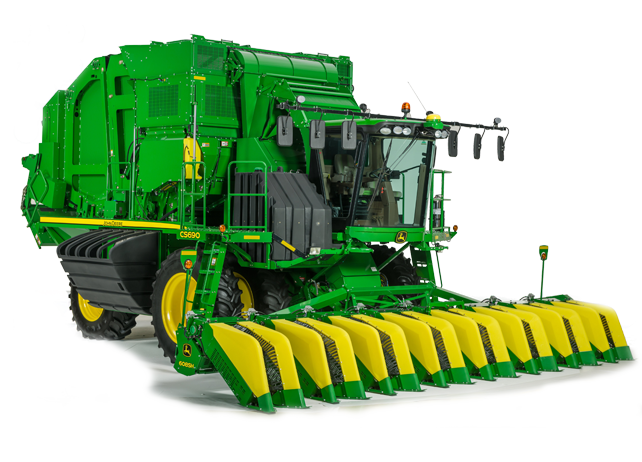
- Engine Power: A 13.5L high-horsepower John Deere engine equips the CS690 to power through rugged terrain and cover large-acreage fields efficiently.
- One-Pass Stripping: Its advanced one-pass stripping system removes entire cotton bolls in a single sweep, making it ideal for dryland regions facing tight weather windows.
- Continuous Harvesting: With a high-volume accumulator, onboard module builder, and rear handler, the CS690 forms, wraps, and ejects modules without stopping the harvest — maximizing uptime and productivity.
- Real-Time Weighing: Standard integrated weighing technology provides round module weights in real time, helping operators track yields accurately and simplify gin recordkeeping.
- Cotton Quality Protection: Each 8-foot round module is tightly sealed in multiple film layers, secured with John Deere’s Z-LOCK® system to safeguard cotton from wind, moisture, and handling damage.
- Traceability Tech: Harvest Identification and RFID tagging track modules by location, improving gin traceability and documentation.
John Deere Cotton Headers
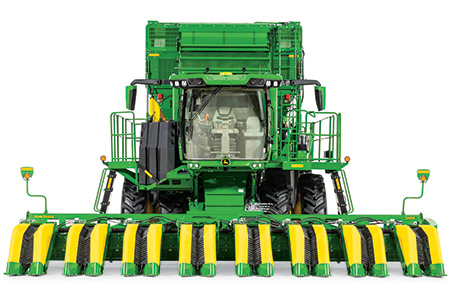
No matter the model, every cotton harvester relies on a front-mounted header to gather the crop and feed it into the system.
John Deere’s SH Series headers are built specifically for cotton strippers, offering options to match your acreage and row spacing while maximizing efficiency in dryland conditions:
- The SH8R: Designed for wide-row operations, this header offers increased capacity and covers more acres per hour compared to previous 8-row models.
- The SH12R: The SH12R is built for narrow-row cotton and covers up to 48% more acres per hour than earlier 8-row headers, detaching quickly for easy transport.
- The SH12F: Ideal for wide rows, this header provides high-capacity harvesting with the added convenience of a folding design, eliminating the need for header trailers and making moves between fields faster.
Preparing for Cotton Harvest Season
Successful harvests start with smart preparation. From crop care to storage planning, every step of prep matters to keep operations efficient and cotton quality high.
- Prep fields: Apply defoliants when roughly 60% of the bolls are open to ensure the cotton is mature enough for harvest and keep fiber quality high. Weed fields first, since excess growth can interfere with defoliation and slow machines.
- Service machines: Follow recommended service intervals outlined in your equipment manual to avoid breakdowns. Be sure to:
- Inspect hydraulics, grease bearings, and clean filters to ensure your equipment runs smoothly.
- Check common wear parts such as spindles, brushes, and belts regularly to maintain optimal performance.
- Keep software systems like JDLink™ and GreenStar™ updated for reliable operation and accurate data.
- Plan storage and transports: Make sure module builders and handlers are serviced, trailers are staged, and storage areas are ready and cleared. Having these systems in place allows you to wrap, move, and protect cotton modules quickly, keeping fiber safe.
Harvest Cotton Efficiently with John Deere
During cotton harvest season, timing and tools are what separate a good harvest from a great one. With the CP690 and CS690 harvesters supported by a lineup of reliable headers, John Deere provides the gear to head into the harvest season with confidence.
Make sure your harvest delivers its full potential. Visit your local John Deere dealer to find equipment that protects yield, cuts costs, and keeps you ahead of the weather.
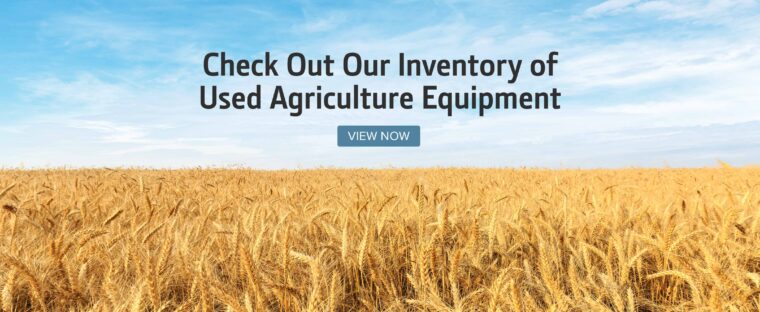
FAQs About Cotton Harvesting Season
1. What Month Is Cotton Harvested in the U.S.?
Most cotton is harvested between late September and November, though exact timing varies by region.
2. How Long Is Cotton Harvest Season?
Cotton harvest season length varies by region, but generally lasts about six weeks.
3. Do Farmers Harvest Cotton Differently in Texas vs. The Southeast?
Yes. In Texas, farmers often rely on cotton strippers, which are better suited to the region’s drier climate and large-acreage fields. In the Southeast, where humidity is higher, growers typically use pickers to gently remove cotton from the bolls.
4. What Equipment Is Best for Cotton Harvest?
John Deere’s CP690 Cotton Picker and CS690 Cotton Stripper are the go-to choices for modern cotton harvests, supported by John Deere headers for maximum performance. The CP690 is ideal for preserving fiber quality, while the CS690 is designed for speed and efficiency in drier regions.
